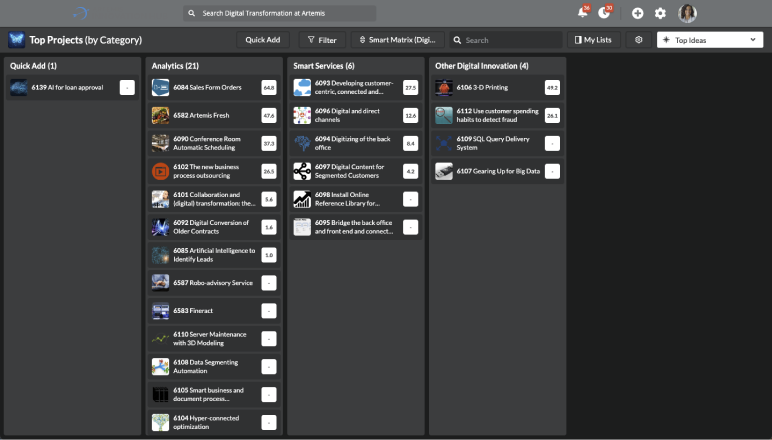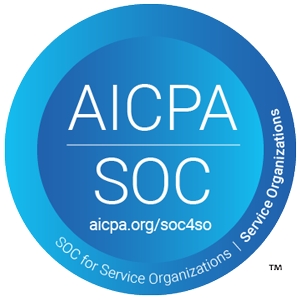
Why You Need Idea Management
Why You Need Idea Management

There once was a time when the market changed slowly, and customer expectations were generally lower. We worked in silos, and could anticipate the road ahead. Input primarily came from the top down, rather than peers and direct reports. We were less connected globally, and technological advances in adjacent industries didn’t threaten to disrupt ours. Innovation was nice to have, but not essential.
That era is over.
Today, innovation is the lifeblood of survival in a rapidly changing world with increasingly higher customer expectations. Digital transformation is coming to every line of business and managers have more to consider than ever before. The ability to think holistically is table stakes in this new era. Not only is your organization impacted and potentially upended by technological advances in other industries, but there’s an increasing trend away from silos and toward cross functional collaboration within companies to meet the complexity of the world. The next epoch of business will be dominated by those that can effectively navigate this complexity, and to that end, new tools will be needed.
Manage a Greater Volume of Input
The first step in navigating today’s complexity is managing the ever increasing flow of inputs ranging from employee suggestions, to ideas for new initiatives, and project requests from stakeholders. Each of these different types of input presents its own challenge. Depending on your business, job role, and the processes you work with, these inputs probably come hurtling toward you from multiple platforms, and if you’re not able to manage those inputs effectively, you’re not in control.
Ideas often don’t stand a chance of developing because they’re collected willy nilly on everything from post-it notes to whiteboards, to suggestion boxes to meeting notes, to emails and messaging apps, to bug trackers and fix-it logs. Such a disparate and disjointed approach to gathering and tracking ideas demands a scavenger hunt through all those potential locales whenever a need or opportunity arises. Not only is this time consuming and inefficient, but as a result, many viable ideas never see the light of day.
Employee input is a more delicate matter. Suggestions may get shared with managers through the same channels as other inputs, but without a dedicated location and process to ensure those suggestions are given due consideration, employee input can slip through the cracks, undermining morale and trust.

Then there’s the matter of project requests from management or cross functional stakeholders, which can be numerous. But which of the many inputs are worth allocating your limited resources to? While you may evaluate them against your KPIs and OKRs, a broader, cross functional, perspective is often needed to properly evaluate their merit. If you make decisions in a silo, or give in to social pressure, you risk potentially burning out your team on projects that won’t move the needle.
If any of the above sounds familiar, it’s time for you to seriously consider adopting a more formal, tried and true, approach to idea management.
Prioritize the Best Ideas
The discipline of good idea management puts you in control of your new and backlogged inputs with a central location for their storage, and a method of evaluation that ensures you’re able to select and prioritize the feedback, projects, and ideas that are truly worth allocating your resources to.
Rather than looking for an idea only in response to a need or external pressure, idea management empowers you to be proactive, surveying a flow of ideas that is structured, and continuously evaluated, with the best ideas on tap, ready to move to the execution stage.
You may choose to select an idea based on a wide variety of criteria such as resource availability, alignment with your existing roadmap, or budget. The transparency made available through idea management software enables others to see what you’re doing and why, how the initiative is being resourced, and when it might be ready.

Make Better Decisions with a Holistic View
Because managers have more to consider than ever before in an increasingly complex business landscape, it’s critical to find a way to stand above the details and see the forest through the trees. Idea management software yields new insight by connecting input from all sources, e.g., the insights from employee surveys and polls will land in the same place as the questions from the all-hands meeting, comments from your social media monitoring, and feedback from other channels. Aggregating input from all sources will position you to see the big picture, identify patterns, evaluate and prioritize feedback holistically, and make sound decisions about which inputs warrant action.
Equip your Organization for a More Complex World
Idea management software addresses the needs of business today — you’ll harness more input, increase your visibility of the playing field, adapt to rapidly shifting trends, and be able to select the best ideas to meet business objectives, all while building a culture of trust and transparency. These are no longer pie in the sky goals, they’re table stakes for continued success in today’s rapidly changing world. You’ll not only reduce the risk of being disrupted, but also position your company to be the disrupter.
Read More:

